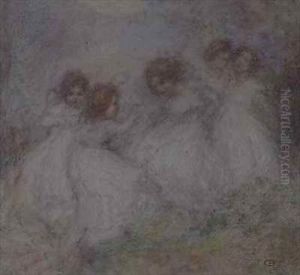Ernest Charles de Belle Paintings
Ernest Charles de Belle was a Canadian painter known for his landscape paintings and his role in the early 20th century Canadian art scene. Born on December 20, 1873, in Montreal, Quebec, de Belle's artistic skills were evident from a young age. He was part of the second generation of Canadian artists who followed the renowned Group of Seven, contributing to the development of a distinct Canadian art style that focused on the country's rugged natural beauty.
De Belle's early education in art was under the tutelage of the Art Association of Montreal. He later traveled to Paris, which was the epicenter of the art world at the time, to further his studies. There, he attended the Académie Julian, a popular art school for foreign students, where he was exposed to a wide range of artistic styles and techniques. He studied under notable painters such as Jean-Paul Laurens and Benjamin Constant, which greatly influenced his technique and artistic outlook.
After his time in Europe, de Belle returned to Canada and began to make a name for himself as a landscape artist. His works often depicted the Canadian wilderness, characterized by a use of bold colors and dynamic brushwork that captured the essence of the landscapes he loved. He painted scenes from across Canada, including Quebec, the Rocky Mountains, and the Maritimes, showcasing the diverse natural beauty of the country.
Throughout his career, de Belle was involved with various art organizations and exhibited his work widely. He was a member of the Royal Canadian Academy of Arts and also exhibited with the Art Association of Montreal. Despite not being as widely recognized as some of his contemporaries, de Belle's contribution to Canadian art history is significant, as he helped to define a visual language for Canadian landscapes that resonated with both national and international audiences.
Ernest Charles de Belle's works are part of several collections, and his paintings can be found in galleries and museums across Canada. He continued to paint and contribute to the Canadian art scene until his death on March 27, 1948, in Montreal. De Belle's legacy lives on through his landscapes, which continue to be appreciated for their vibrant portrayal of Canada's natural environment.
